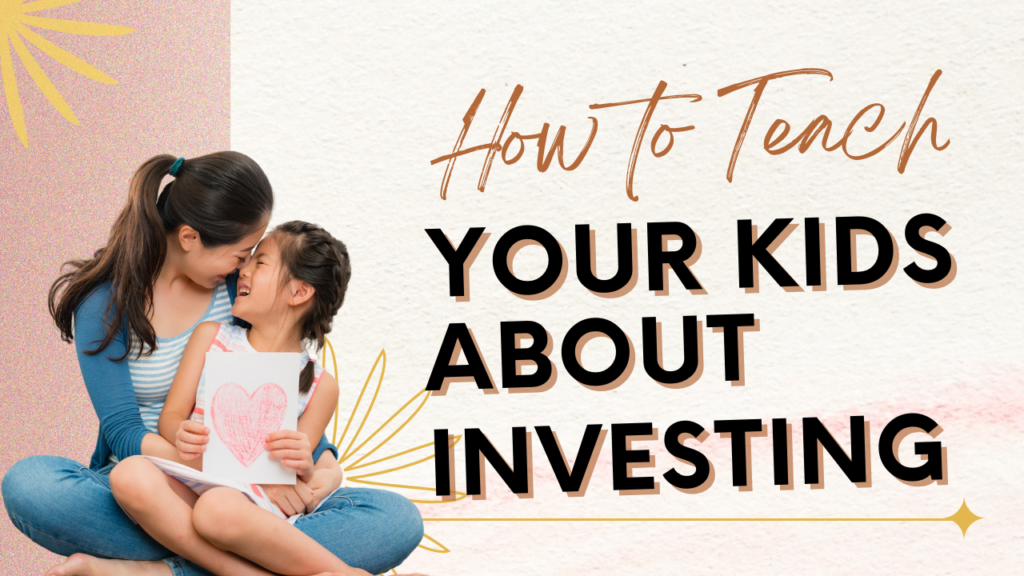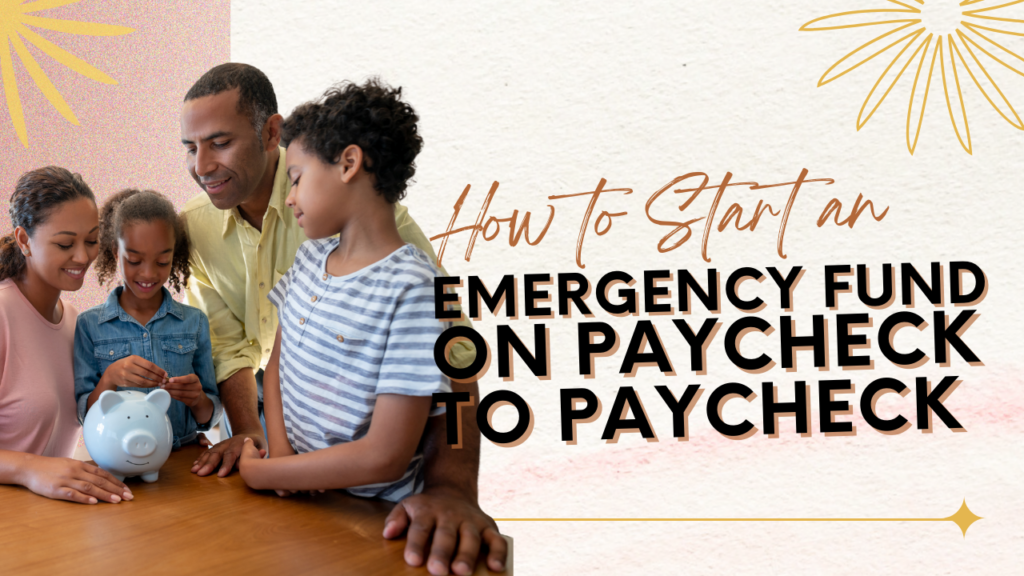As moms, we not only nurture our children’s health and education but also their financial wisdom. In this age of information, teaching our kids about investing isn’t just a bonus; it’s a necessity for their future security. Investing is a crucial skill for financial independence, yet it’s often overlooked in early education. As a mom, I believe it’s never too early to start teaching your children about the world of investing.
Whether you’re a seasoned investor or just beginning to explore the realm of finance, you’ll find valuable insights on how to teach your kids about investing in an understandable and exciting way.

Understanding the Basics of Investing
What is Investing?
Investing, at its core, is the act of allocating resources, usually money, with the expectation of generating an income or profit. It’s about making your money work for you. The idea is to put your funds into ventures like stocks, bonds, mutual funds, real estate, or even a business, with the hope that, over time, they will grow in value.
Think of investing as planting a seed. When you plant a seed, you nurture it, give it time to grow, and eventually, it blossoms into a fruitful tree. Similarly, when you invest, you’re planting your financial seed. You’re giving your money the opportunity to grow, compound, and flourish over time.
One of the key concepts in investing is the idea of ‘risk versus reward.’ Generally, the higher the potential return, the higher the risk. This means that while some investments have the potential for high returns, they also come with a chance of losing value. It’s important to understand this balance, as it helps in making informed decisions about where to invest.
Andrew Beattie of Investopedia suggests a good starting point for kids: “Explain the relationship between risk and reward well before they start reviewing company profiles online.”
Types of Investments
There are several types of investments, each with its own level of risk and potential return.
Stocks
Buying a stock means buying a small piece of a company. As the company grows, so does the value of your share.
Bonds
These are like loans to the government or a company, where you earn interest over a period.
Mutual Funds
These are a collection of various stocks and bonds, managed by a professional, allowing you to diversify your investments.
Real Estate
Investing in property, which can generate income through rent or increase in value over time.
Savings Accounts and CDs
Low-risk options where money earns interest in a bank.
Why is it Important for Kids?
Daniel Kurt of Investopedia says: “Research suggests that many of our financial habits are set by age seven. If good habits aren’t formed early, it becomes harder to point your offspring in the right direction.” Teaching kids about investing is crucial for several reasons:
- Financial Literacy: In a world where financial education is not a standard part of school curriculum, teaching kids about investing fills a crucial gap. It helps them understand how money works, how it can grow, and the importance of financial planning.
- Developing Good Habits: Learning about investing early helps children develop good financial habits like saving, budgeting, and planning for the future. These skills are essential in navigating life’s financial challenges.
- Understanding Value and Patience: Investing teaches kids about the value of money and the importance of patience. They learn that good things come to those who wait and that instant gratification isn’t always the best approach, especially when it comes to finances.
- Preparing for the Future: In an uncertain economic climate, having investment knowledge can provide a sense of security. Understanding investments can help kids make smarter decisions in the future, whether it’s saving for college, starting a business, or planning retirement savings.
- Empowerment and Confidence: Financial knowledge is empowering. It builds confidence in kids, making them feel more prepared and capable of handling financial matters as they grow older.
By integrating these concepts into their early education, we equip our kids with tools not just for financial success, but for a lifetime of informed decision-making and financial independence.

Age-Appropriate Investment Concepts
Investment education should evolve with a child’s age and understanding. Tailoring the concepts to their developmental stage makes the learning process both effective and enjoyable. It’s also important to set age-appropriate expectations: as Liz Frazier, a writer for Forbes puts it: “We’re not trying to create the next Warren Buffet. Great if you do, and no one would complain if Junior followed in his footsteps – but that’s not the ultimate goal and puts way too much pressure on both parent and child.”
For Younger Kids (5-8 years)
At this age, the focus should be on basic financial concepts. Start with teaching them the value of money. Use a piggy bank to introduce the concept of saving. Explain how money is earned and the importance of saving for things they want. Simple board games involving money can also be a fun way to introduce basic financial concepts.
For Pre-Teens (9-12 years)
Pre-teens are ready for more complex ideas. Introduce them to the basic concept of investing – how it differs from saving, and why people invest. Explain simple financial instruments like stocks and bonds in relatable terms. For example, buying a stock is like buying a tiny piece of a company. Use visual aids like charts or stories to make these concepts more understandable.
For Teenagers (13-18 years)
Teenagers can grasp more sophisticated investment concepts. Introduce them to the stock market, how it works, and the role it plays in the economy. Discuss different types of investments – stocks, bonds, mutual funds, qualified education expenses, and the tax benefits associated with having them. Encourage them to follow financial news. This is also a great age to start a mock investment portfolio or use online stock market simulators. Discuss the impact of economic events on markets, teaching them about risk and the importance of diversification. And if they’re savvy enough, go far in the future with a Roth IRA.
Involving Children in Family Financial Planning
Involve children in family financial discussions appropriate for their age. Discuss goals like saving for a vacation or a large purchase and how family financial decisions are made. This inclusion not only teaches them about budgeting and planning but also gives them a sense of belonging and responsibility within the family’s financial framework.

How to Teach Your Kids About Investing – Practical Ways
A Basic Savings Account
Introducing children to savings accounts is a foundational step. It’s a practical way to teach them about earning interest over time. Start by helping them open a savings account, and encourage them to save a portion of their allowance or gift money. You can show them how any money they receive works the same way as an adult’s earned income.
Explain how interest works and show them their account statements to illustrate how their money grows. This tangible experience provides a real-world understanding of the benefit of saving and earning interest.
Setting Up a Custodial Account
Once they’re older, you can take it a step further and get them started on investing by setting up a custodial account — this is like an investment account, but you control the finances instead of your child. Custodial accounts are a great way to secure your child’s financial future.
Introducing Stock Market Games
Stock market games are excellent tools for making the concept of investing in stocks accessible and fun for kids. These games simulate real stock market conditions and allow kids to buy and sell stocks without real financial risks. They can learn how market fluctuations affect stock prices and the importance of research and strategy in making investment decisions. By tracking their progress, kids can understand the ups and downs of the market in a controlled, learning-focused environment.
Encouraging Small-Scale Real Investments Through a Brokerage Account
Brokerage accounts are a type of financial account that allows an individual to buy and sell various investments, including stocks, bonds, mutual funds, and ETFs. For helping kids understand investing, a brokerage account can be an invaluable tool. Parents can open a custodial brokerage account, where they manage the account on behalf of their child until they reach legal adulthood.
Through this account, kids can get real-world experience in investing. They can learn how to research stocks, understand market trends, and experience the rewards and risks associated with different types of investments. This hands-on approach not only educates them about the workings of the stock market but also instills important values like patience, risk assessment, and long-term planning.
By actively participating in investment decisions and watching their investments grow over time, kids gain practical financial knowledge and a strong foundation for future financial independence.
Their Own Investment Account
Although your child might not be legally allowed to have an investment account, you can use a custodial account to teach them how it works. Although you’re in control of this account, you can give them a measure of control over the account’s finances.
Involve the child in the process, explaining the choices and the principles of investing. This not only builds their understanding of financial matters but also fosters a sense of ownership and responsibility towards their financial future. Setting up an investment account is more than just a financial decision; it’s a valuable educational tool and a gift that can keep on giving well into their adult years.
Teaching Investment Values
Patience and Long-Term Thinking
One of the most important investment values you can teach your children is patience. The concept of “get rich quick” is prevalent in today’s society, but investing is generally about long-term gains. Teach them the power of compound interest and how small, regular investments can grow significantly over time. Use examples like planting a tree or building a puzzle – activities that require time and patience but are rewarding in the end.
Risk Management
Teaching kids about risk is crucial in investment education. Explain that all investments carry some level of risk and that it’s essential to assess and manage this risk. Teach them about diversification – not putting all their eggs in one basket – and how spreading investments across different types of assets can reduce risk. Encourage them to think about risk in everyday decisions to develop this mindset.
Ethical Investing
In today’s world, where corporate responsibility and sustainability are increasingly important, teaching kids about ethical investing is vital. Discuss how they can choose to invest in companies that align with their values, like those committed to environmental sustainability or social responsibility. This not only instills good values but also shows them how investment decisions can have broader impacts beyond just financial returns.
By integrating these activities and values into their upbringing, you’re not just teaching your children how to invest; you’re equipping them with the skills and mindset to be thoughtful, responsible, and successful in their future financial endeavors.
Investment Accounts For Kids: Securing Their Financial Future
Remember that this is just the beginning of a lifelong financial education. By instilling these values and skills early on, we’re not just preparing our children for financial independence; we’re empowering them with the knowledge to make informed decisions and face the future with confidence.
The world of finance can be complex, but with patience, creativity, and continuous learning, we can make it an engaging and rewarding part of our children’s lives. Keep the conversations going, the questions flowing, and the investments growing. Here’s to raising the next generation of informed, responsible, and savvy investors!




